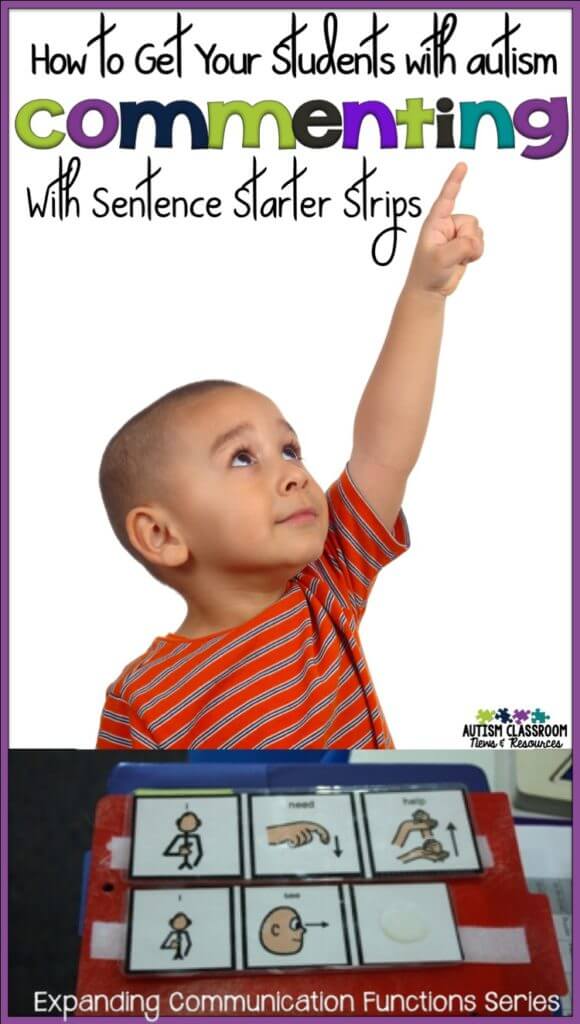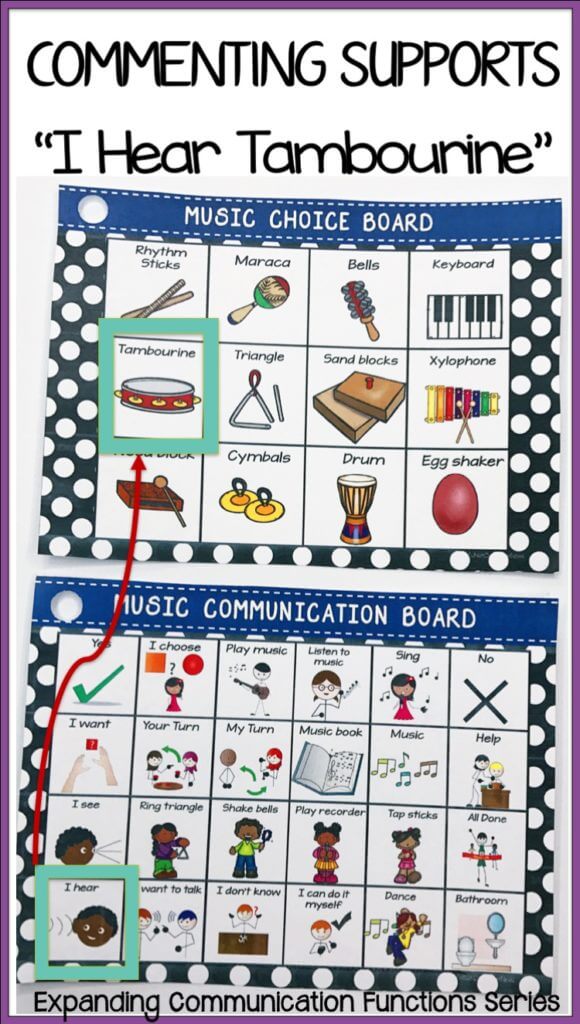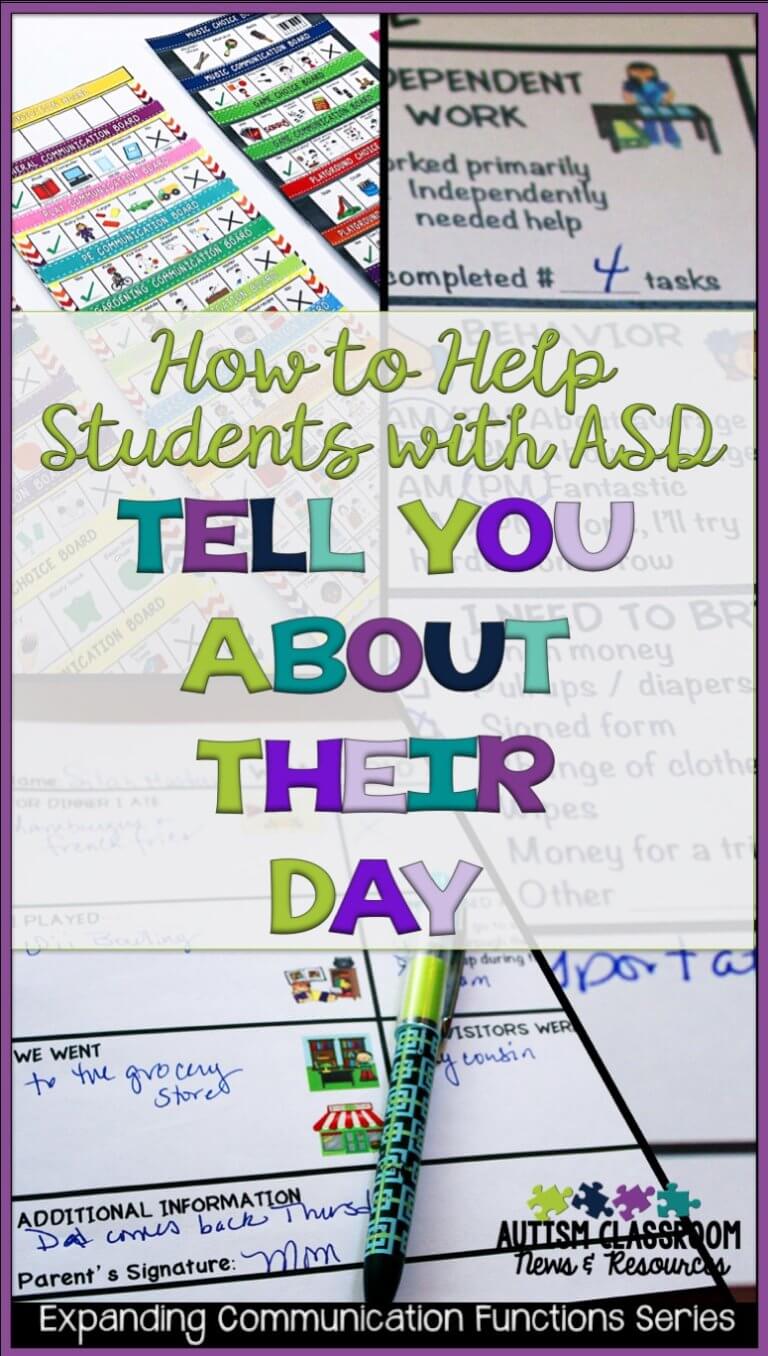Do you have students who can communicate but really only communicate when they want something? How about a student who has lots of receptive language concepts but isn’t using them expressively? Commenting is one of the first steps toward more social language for a lot of our students.
 Why Is Commenting Hard?
Why Is Commenting Hard?
But, commenting is often difficult to teach to our students with autism because it typically is used purely for social reasons. In other words, it’s reinforced primarily by someone else’s interaction. In the first post of this increasing functions of communication series, I talked about commenting as one of the first phases of learning to communicate and converse successfully.
Commenting comes easily to typical toddlers. I was at a family function several years ago where all the cousins were talking about their kids. Several of them noted that when they went through their photos, all their kids were pointing in every single picture taken when they were about 2 years old. That’s typical. And during that time, their parents were modeling the language for what they were pointing at. As the kids got older, they pointed and commented. One of the early signs of autism is the lack of this behavior, so it’s no wonder our kids struggle with it. And getting it to come spontaneously is tough. So here are some things I have done in the past to try to encourage it.
Visual Sentence Strips
If you have ever taken the training for Picture Exchange Communication System (PECS), the later phases of the system focus on commenting. They teach it by using sentence starters with the students. When they are still in the requesting phases they use an “I Want” starter. When they move to commenting we typically add “I see” and “I hear.” You could also easily add “I feel” (as in textures–I wouldn’t start this with emotions). Then, just like with describing, you set up situations in which the student uses those comments prior to making a request for a desired item.
So for instance, say you have a kid who likes to do puzzles and he really likes them to be complete. Hold back the pieces of the puzzle (or or just the last few) and cue him with a sentence strip for “I see ___” in which he tells you what he sees in the puzzle. He gets a puzzle piece after the comment to add to the puzzle. you could require him to make a request for it or not depending on your situation. That way you are providing reinforcement for the comment but the comment isn’t a requesting function.

Examples of Activities for Commenting
You can do some of the same activities you use to teach describing to practice commenting with sentence strips. Here are just a few.
- Magical Mystery Bag: Have the students pull out items and use “I see,” or “I feel” when they see them.
- I Spy: Have students use sentence strips to start with “I spy…”
- Reading books and looking at illustrations…have a sentence strip for “I see” and prompt the students comment about the picture before you turn the page
- Go for a walk with sentence starters on a ring. Stop at certain places and present them as a prompt for the student to comment about what they see or touch.
- Use musical instruments that make different sounds and have students comment on what they hear
Fade the Sentence Strips
The sentence strips essentially serve as a visual prompt, but they are helpful to get students started. This is a new function of communication for many of our students, so they need the supports at first. But we have to make sure we fade them out over time to build to spontaneous commenting.
Why Use Visual Sentence Starters Instead of Verbal?
Precisely because they need to be faded. Visuals are easier to fade than verbal prompts. You can cut the sentence strip to use have I ____ on it and they begin to fill in more. You can make the print lighter on a copier or printer. Also you can hold the visual farther away from the student. And finally, you can delay presenting them. If you use verbal sentence starters you can shorten the statement or delay them, but those are the only options you have. Also the verbal starter often becomes a direction to the student with autism rather than focusing on what he/she is commenting about.
Assure Communication Supports
And of course as with all communication teaching, we have to make sure that we have the supports for students to comment. You can use extra picture boards or visual pictures they add to the sentence strip and read. If you need communication materials, these communication boards include a variety of comment-type words. However the student is communicating, you have to make sure you have the vocabulary to support what they might way.
Note from Chris: There will be no Facebook Live session this Sunday. My family life has spun out of control at the moment but I hope to be back next week with some new ideas and surprises!
So, sentence strips are a great way to get started with comments. I’ll be back later in the week with a way to work on more initiation of comments that are more student-generated, than teacher directed.
Until next time,







